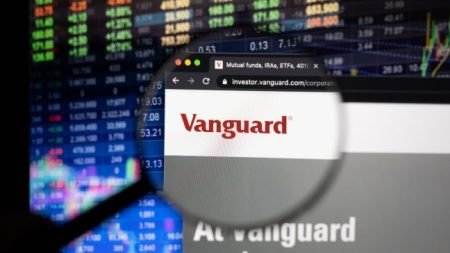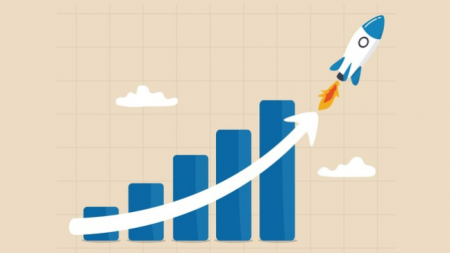Growing up, we’re told to save for retirement.
So at our first job, we open a 401(k) and maximize our contributions.
Now what? Now that we’ve covered rent and our student loan payment, where should we invest the rest of this money? Stocks? A savings account?
Let’s investigate the best places to invest money after your 401(k). And for starters, let’s calibrate what “maximizing” your 401(k) really means for investors under 30.
What is the 401(k) maximum in 2023?
According to the IRS, workers under 50 can now contribute a maximum $22,500 to their 401(k)s for 2023.
The $22,500 limit applies to 401(k) plans and similar 403(b) and 457 plans. Those 50 and older can save an additional $7,500 per year, which is called a “catch-up” contribution.
That means you and I can stash away a maximum $1,875 into our 401(k)s each month. That’s a lot, and for the average Gen Z making between $30,000 and $40,000, it’s too much.
I mean, you can’t save everything for retirement — you gotta live a little!
An alternate definition of “maximize” for investors under 30
For most people under 30, “maximizing” your 401(k) might just mean meeting your employer match.
The typical employer match is 6%, meaning if you contribute 6% of your paycheck to your 401(k), your employer will match it 1:1. It’s basically free money, or a 6% bonus that you get when you retire.
So, whether your definition of “maximize” is $22,500 or 6%, where should you put the rest of your investable capital?
Where to invest after you max out your 401(k)
To preface, you don’t have to pick just one of these options and pour your cash into it. It’s always better to diversify, so instead of picking one, come up with a short list.
A Roth IRA
- Further diversifies your retirement holdings; penalty-free withdrawals after age 59½
- Can’t contribute more than $6.5k a year; early withdrawals incur 10% penalty
- Young investors making <$153,000 who want to keep contributing to retirement
An IRA is a retirement account that isn’t tied to your employer, so as long as you meet the income requirements, you can keep contributing to it even after you quit.
A Roth IRA is a specialized type of IRA with plenty of benefits for young investors. First, you pay taxes on your contributions upfront — not later when you withdraw it — meaning your earnings grow tax-free and you can pay your taxes while you’re in a lower tax bracket.
And even if you make too much money to contribute to a Roth IRA ($153,000+ in 2023), there are still ways around this. Check out the backdoor Roth IRA.
In short, a Roth IRA is a great place to stash extra money if you’ve maximized your employer’s contribution to your 401(k) but still want to keep saving for retirement.
- The best Roth IRA investment accounts
- Roth IRA or traditional IRA: Which should you choose?
- Cheap when you’re under 30 (~$15/month); can provide life-changing money to your dependents
- Rates quickly skyrocket for smokers, skydivers, and other risk factors
- Young investors with dependents (children, family, etc.)
Life insurance is super cheap when you’re young and healthy, and for investors under 30 with dependents (i.e., people who depend on you for income), it’s a no-brainer purchase once you’ve maxed out your 401(k).
For around $15 a month, you can have a 10-year, $250,000 policy that can help your dependents pay for your funeral and cover years of lost wages.
Now, that being said, life insurance premiums do go up rather quickly if you have certain risk factors. Smokers, for example, pay more than triple what non-smokers pay. So do skydivers (if you can get insured in the first place).
But if you have dependents and can afford life insurance, it’s an excellent “investment” to make once you’ve maxed your 401(k).
- How life insurance works: What to know about buying a policy
- Best companies to buy life insurance from
I bonds
- Zero risk; high interest during high inflationary periods
- Capped at $10,000 (plus $5,000 with your tax return); locked up for min. one year
- Young investors who want to protect their long-term savings from inflation
New to bonds? Here’s a quick summary.
Basically, buying a bond is like playing the role of lender to a company, city, or even the federal government. As thanks for the loan, they pay you regular interest. That’s why old people like bonds — low risk and regular income.
But Series I Savings Bonds (I bonds for short) are special types of bonds that match the rate of inflation. Basically, you buy up to $10,000 of these bonds directly from the government and they guarantee you six months at a certain interest rate at or near inflation.
And since inflation was so high recently, the I bond rate through April 2023 is 6.89%.
As for drawbacks, I bonds are locked up for one year. And if you withdraw between years one and five, you’ll incur a penalty equivalent to three months of interest.
But even post-tax and post-penalty, if you invest up to $10k in I bonds for a year, your net interest rate should be around 4% — guaranteed.
That’s hard to beat, and makes I bonds ideal for young investors who want to protect their savings from inflation and don’t mind losing access to it for a year.
A high-yield savings account (HYSA)
- Set up in two minutes; zero risk; funds remain accessible; some have sign-up bonuses
- Low interest rates
- Young investors who want their savings to remain accessible, but still earning a little interest
Let’s say you maxed out your 401(k), but you’re not quite ready to lock up any more money. Maybe you’re saving for a house, a car, or just want a rainy-day fund that you can access ASAP without penalties or paperwork.
You know you won’t earn as much interest that way, but you’re OK with that.
If that’s you, a high-yield savings account (HYSA) might be perfect. As the name implies, an HYSA offers a higher interest rate than your average savings account (think ~3% versus 0.1%) and always lets you withdraw your money whenever you want. If anything, some HYSAs have generous withdrawal limits, like “only” 10 per month.
The downside to putting your post-401(k) money in an HYSA is that you just won’t gain much interest. After all, 3% is way lower than the rate of inflation right now, so you’d technically be losing money.
But some savings accounts have bonuses of $150, $200, sometimes even $500 if you can save above a certain threshold (usually between $10,000 and $30,000).
So, if you want your money to earn money but aren’t ready to give up access to it, an HYSA could be perfect.
Best high-yield savings accounts
A health savings account (HSA)
- Can lower the cost of medical care; employer may match contributions like a 401(k)
- Can only use for qualified medical expenses; may not generate interest at the rate of other investments
- Young investors with High Deductible Health Plans (HDHPs) who want a rainy-day fund for medical expenses
A health savings account (HSA) is like a specialized high-yield savings account just for healthcare. If you have a High Deductible Health Plan, i.e., health insurance with a deductible higher than $1,400 for individuals or $2,800 for families, you qualify to open an HSA.
HSAs generate interest, and you can contribute up to $3,850 or $7,750 per year for individual/family plans, respectively. Then, you just let your HSA sit and cook until you need it to cover deductibles, copayment, coinsurance, or other qualified medical expenses.
In the end, having an HSA can be a big stress-reliever for young investors with high deductibles.
How to pick a health savings account
Index funds
- Inherently diverse; earn an average 10% APY; allows you to invest in the whole market in a single click
- Potential upside basically capped around 25%; still requires some research
- Young investors who want to invest in stocks but don’t know which to pick
Let’s say you’ve maxed out your 401(k) and are ready to put the rest in the stock market. After all, that’s where the real money is — and how the rich get rich.
But once you open a brokerage account, now what? Which stocks do you pick? Can’t you just click a button to… invest in the stock market and be done with it?
You sure can, and it’s actually how a lot of investors — even professionals — invest. They’re called index funds, and they’re designed to track the performance of an entire index, like the S&P 500 or the NASDAQ. So, when you buy shares of an index fund, you’re effectively investing in the whole stock market at once.
If you’re looking for a moderately safe investment that can provide way, way higher returns than a savings account (think 10% versus 2%), consider buying up some index funds.
Why index funds cost less, reduce risk and make you a better investor
ETFs and mutual funds
- Lower risk than buying individual stocks; convenient way to buy into a whole industry at once
- Higher risk and requires more research than index funds; some mutual funds have high expense ratios (read: fees)
- Young investors with a moderate risk tolerance who know what industries they want to invest in
Before investing in anything riskier than index funds, it helps to check your risk tolerance. After all, you don’t want to invest in something so risky that it keeps you awake at night!
Now, if you can stomach a little risk, you might consider investing your post-401(k) cash into ETFs (I’ll explain mutual funds in a bit). ETFs, or exchange-traded funds, are bundles of stock that share a common theme. You might find electric vehicle ETFs, real estate ETFs, even ETFs that track companies getting an unusual amount of social media mentions.
Mutual funds are like ETFs that are actively managed, meaning a team of professional investors somewhere is actively moving around the investments inside.
Naturally, picking the right ETF or mutual fund requires a bit more research than index funds. You have to know which industries, technologies, or regions of the globe you want to invest in. But if you pick the right ones, the growth potential can be much higher than index funds — while still being lower risk than individual stocks.
How to invest in ETFs
- Easy to buy and sell; considered safer than regular stocks; limitless potential upside; own a piece of companies you admire
- Higher risk than index funds or ETFs; stocks can plummet unexpectedly
- Young investors with a high risk tolerance and the time/passion required to research stocks
Finally, if you have some post-401(k) cash lying around and would like to invest in a way that can earn the most money, consider buying up shares of blue chip stocks.
Blue chips are companies that tend to grow at a fast, consistent, and reliable rate. Companies like Microsoft, Google, and Apple have been considered blue chips for decades.
Now, even though these companies tend to grow steadily and reward shareholders, they also have their downturns. Meta Platforms Inc (aka Facebook) is a blue chip that’s having an abysmal year, as investors simply aren’t sharing Zuckerberg’s enthusiasm for the metaverse.
Source: Google Finance
That’s why investing in blue chips doesn’t always mean you’ll make money. It may take some research and reading some quarterly earnings reports, too, to handpick which blue chips you think will keep growing.
And if that’s starting to sound like too much work, why not a blue chip ETF?
When it comes to leftover cash for the month, the worst thing you can do is nothing. If it sits in your checking account, it’ll just lose value to inflation, and you might be tempted to spend it.
Put that money to work instead! Don’t let it live rent free — sprinkle it across index funds, and an HYSA, and perhaps even another retirement account for some diversity. After all, compound interest and time are all you need to become financially independent.









